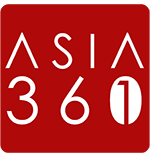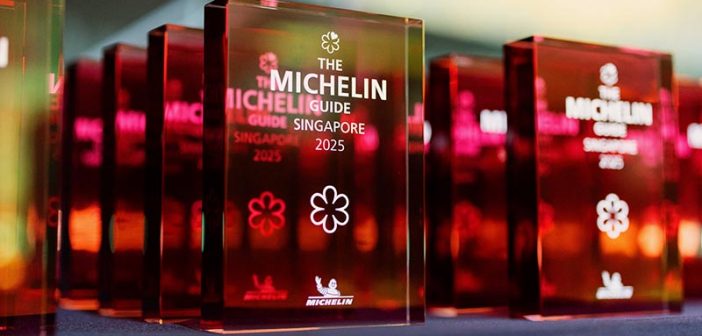Singapore’s culinary scene sparkled on 24 July 2025 with the unveiling of the latest Michelin Guide results. This year’s edition crowned 42 restaurants with Michelin stars—three of them earning the coveted three-star accolade, seven receiving two stars, and 32 clinching one star.
Singapore’s Three-Star Titans Hold the Fort
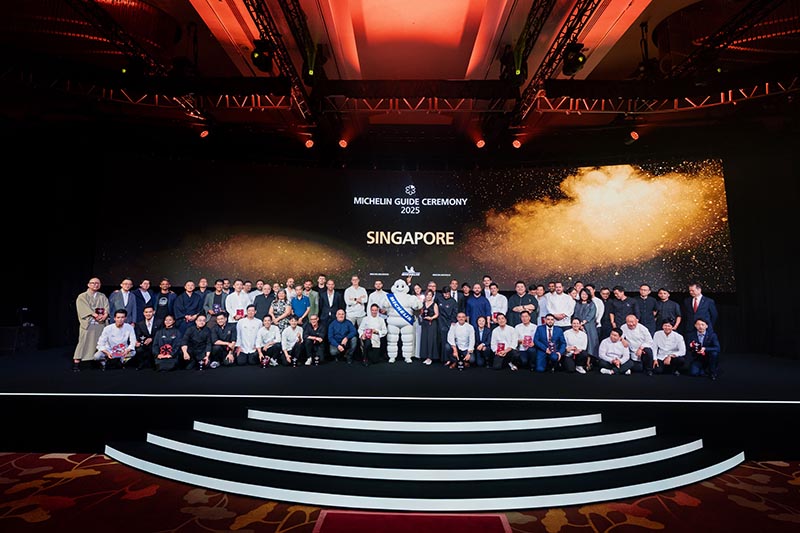
All the recipients of the Michelin Guide awards gather on a star-studded night at Marina Bay Sands. Photo © Michelin Guide
For those at the peak of the gastronomic ladder, consistency is king. Once again, Odette, Les Amis and Zén retained their three-star honours. These institutions have long proven their excellence, each with its distinct identity—Odette with its elegant modern French fare, Les Amis with its classical precision, and Zén with its immersive Nordic-Japanese tasting experience. Their continued reign is a testament not only to flavour, but also to flawless execution and unrelenting refinement.
A Rising Star in the Two-Star League
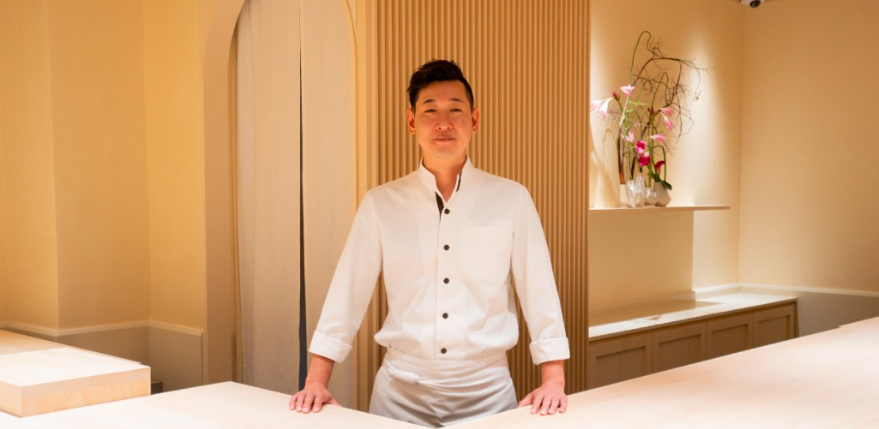
Chef-owner Yoshio Sakuta’s Sushi Sakuta moves up a rank to garner 2 Michelin stars. Photo © Sushi Sakuta
One of the biggest stories this year is the promotion of Sushi Sakuta, which moved up from one star to two. Known for its exquisite omakase crafted around seasonality and detail, the restaurant has impressed both diners and inspectors alike. It now shares the spotlight with other two-starred favourites including Cloudstreet, Thevar, Meta and Jaan by Kirk Westaway, all of which continue to fly the flag for culinary sophistication in Singapore.
One-Star Highlights and Fresh Entrants
The one-star list welcomed just one new entrant this year: Omakase @ Stevens, helmed by chef Kazuki Arimoto, who was also recognised with the Young Chef Award. With its intimate counter seating and focus on ingredient purity, it joins the ranks of stalwarts like **Burnt Ends**, **Waku Ghin**, and **Labyrinth**, which have consistently demonstrated innovation and quality.
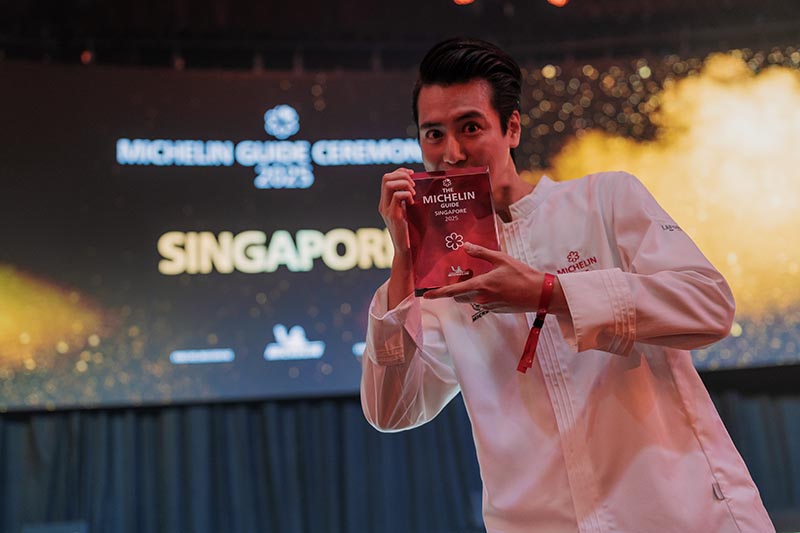
Chef Kazuki Arimoto celebrates his double wins at the Michelin Guide Awards 2025. Photo © Michelin Guide
Behind the Curtain: A Wave of Closures
Yet, this year’s guide also bore a quiet sobering note. Ten restaurants that previously held one Michelin star have disappeared from the 2025 list—not due to a loss of quality, but often because they’ve shut their doors for good.
The likes of Chef Kang’s, Matera, Poise, Sommer, Sushi Kimura and Shinji by Kanesaka (Carlton Hotel branch) have all ceased operations. Art di Daniele Sperindio is in the midst of relocating, while Rhubarb has re-emerged under a new name, Encore by Rhubarb. Terra, once a standout in modern Italian-Japanese cuisine, has also quietly exited.
This phenomenon raises a difficult question: If a Michelin star is the ultimate culinary accolade, why do so many of its recipients still struggle to survive? For many chefs, earning a Michelin star is a dream come true—but keeping the restaurant afloat is a different kind of challenge. In Singapore’s fast-paced, high-cost environment, a star doesn’t guarantee financial success. Rents are steep, labour is scarce, and customers are often chasing the next new thing.
Some one-starred restaurants, though beloved, face a pricing paradox: they must maintain top-tier standards while keeping prices accessible enough to fill seats. Unlike two- and three-star restaurants, which often attract global “destination diners,” many one-star establishments must rely heavily on local patrons, which makes sustainability tougher.
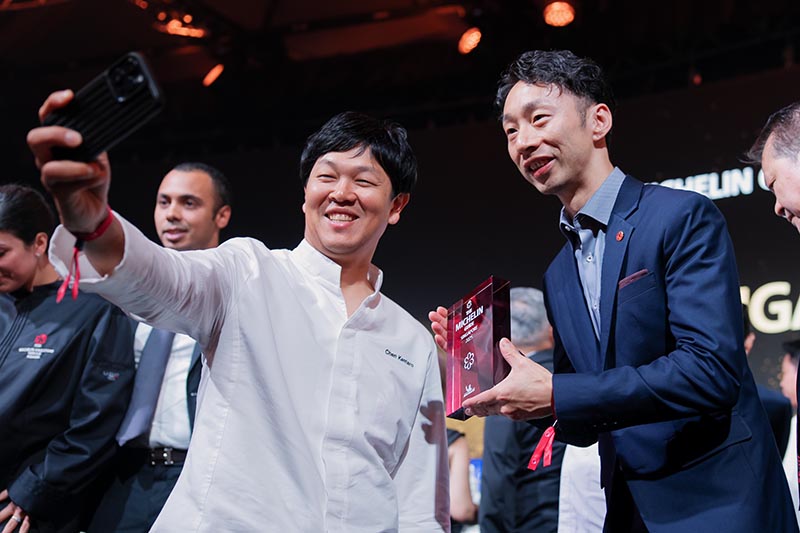
Photo © Michelin Guide
The truth is, while the Michelin Guide celebrates excellence, it doesn’t always reward sustainability. It measures consistency, craft, and creativity—but doesn’t account for rent hikes or burnout. As a result, some chefs choose to step back rather than keep dancing on the kitchen knife’s edge of perfection.
